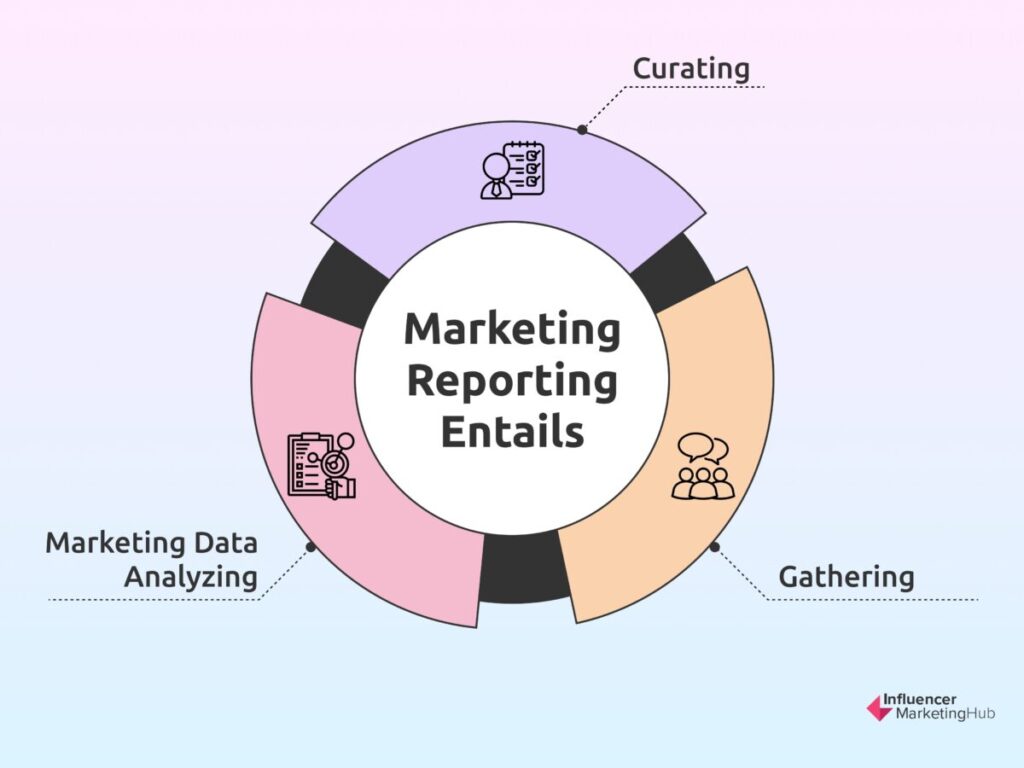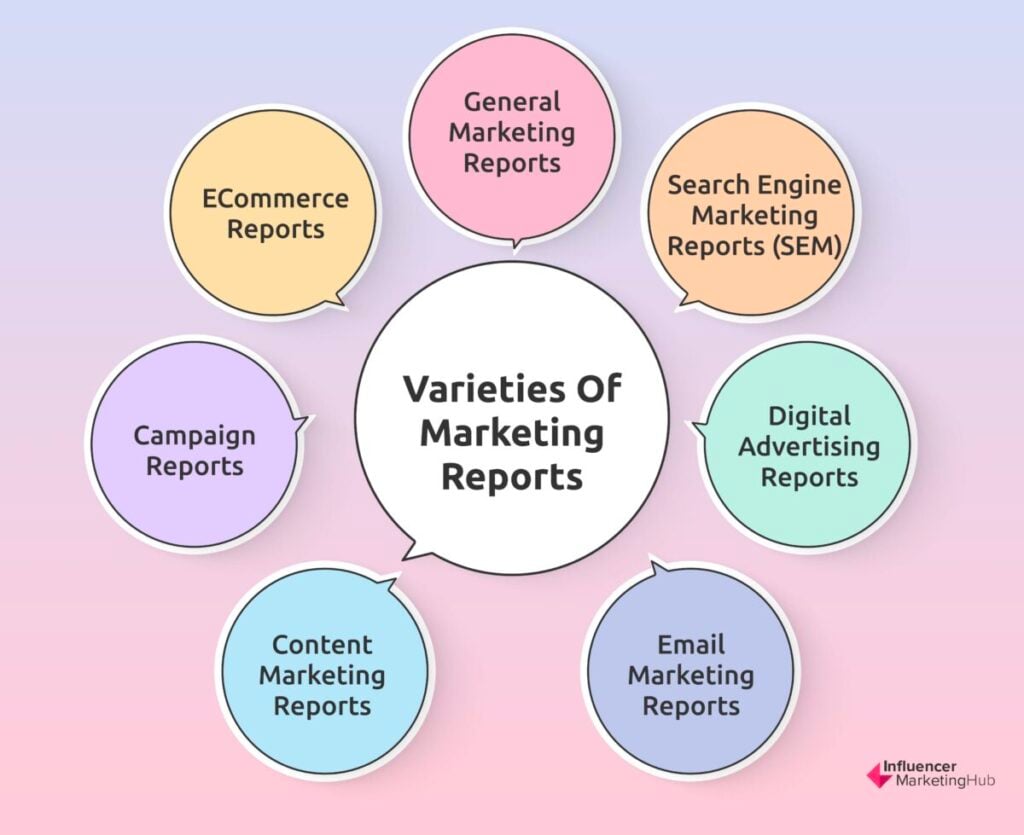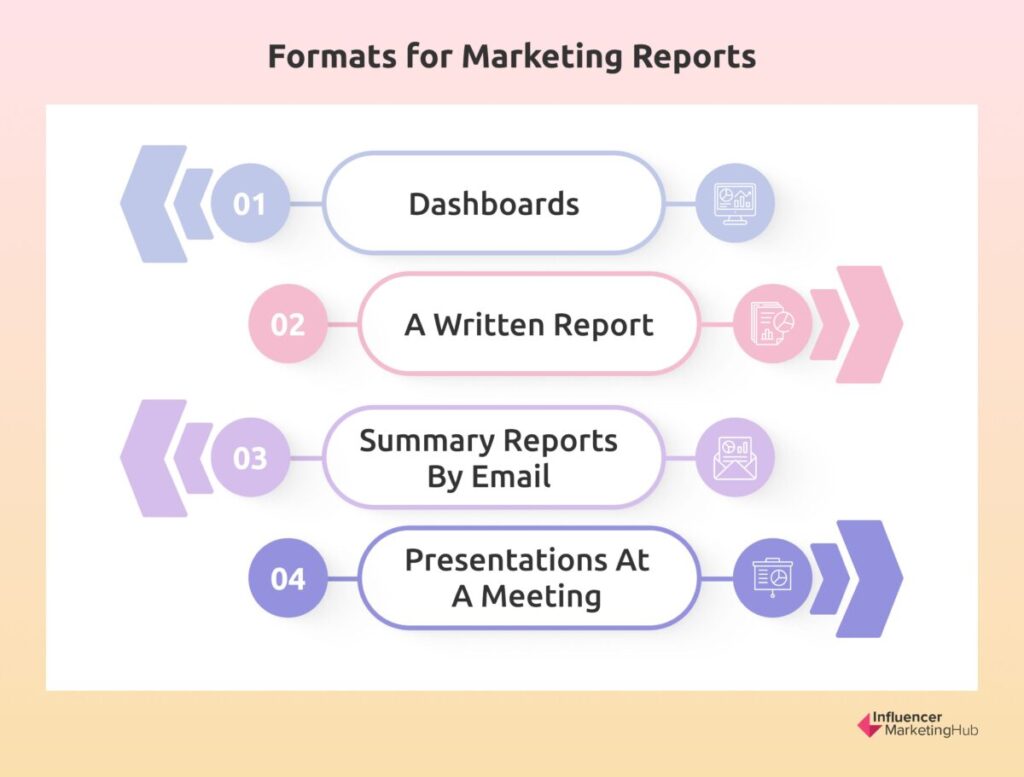No matter what sector of business you operate in, there are times you will have felt surrounded by a plethora of data. The problem with having a mountain of data is that you feel overwhelmed and liable to ignore much of it. And this can be disastrous for your business, as amongst the crud you’ll often find nuggets of data essential for success, that can help your business thrive. This is just as likely in marketing as it is in any other sector of your business.
One interpretation of the word “information” is that it's data that’s useful. If that’s truly the case, decision-makers need only concern themselves with the most relevant information, ignoring all the other data swamping their senses. This is where digital marketing reporting can be vital – done correctly, these reports should contain all the essential information that a report’s users require… and nothing extra! The skill comes, of course, in knowing the users for your digital marketing reports, and understanding what they need to know, without including bloat that the report creators think “may '' be of value.
The Ultimate Guide to Digital Marketing Reporting for 2024:
- What is Marketing Reporting?
- Why is Reporting Important in Digital Marketing?
- How to Write a Digital Marketing Report
- What Should a Digital Marketing Report Include?
- Marketing Metrics to Report
- Goals vs. KPIs
- Benchmarks and Seasonality
- Types of Marketing Reports
- Marketing Reporting Formats
- How Often Should You Report?
- Frequently Asked Questions
What is Marketing Reporting?
Marketing reporting involves curating, gathering, and analyzing marketing data, to showcase marketing performance.
They can be prepared for either internal or external use. Internal users could include management, trying to establish the success of past marketing activities, or analyzing data to look for future opportunities. They might even be marketing team members trying to answer questions they may have about marketing performance. External stakeholders interested in marketing reports could include customers and clients, non-executive shareholders, and even your local community.
Why is Reporting Important in Digital Marketing?
There are multiple reasons why reporting is an essential element of digital marketing. Perhaps the most fundamental is to establish how successful a business is at meeting its stated goals. Your goals shouldn’t be intangible and fuzzy – they should ideally be SMART (Specific, Measurable, Achievable, Relevant, and Time-bound). Goals should ideally cover all aspects of your business activity, including your marketing, where you can set targeted key performance indicators (KPIs). Your digital marketing reports show your progress toward meeting these goals.
You can use digital marketing reports proactively, too. They can help justify decisions, for example as evidence that a particular type of campaign is likely to be successful, or whether you should change the emphasis between marketing channels. You can also use your digital marketing reports to prepare stakeholders for upcoming strategies and tactics you wish to implement.
On a more micro-level, many decision-makers keep a close eye on marketing analytics like ROI and ROAS (return on ad spend) to justify marketing expenditure. The level of scrutiny will depend on a company’s size. Often smaller companies find it harder to justify a comparatively modest level of marketing expenditure than larger companies used to spending millions of marketing dollars. You should customize your digital marketing reports to cater to the interested parties reading the reports.
If your focus is on how your social media accounts have been performing, then you might find value in using one of the Top Social Media Reporting Tools we have previously reviewed. In the case of influencer marketing, we’ve written about Top Influencer Analytics Tools for Decoding Digital Influences. In the case of email marketing, most of the Top Email Management Software Tools to Boost Your Productivity can create reports that will answer your questions about your performance.
How to Write a Digital Marketing Report
There are multiple types of digital marketing reports. Therefore, you must understand the requirements of the end users, so that you can customize the reports to meet their needs. Remember, bigger isn’t necessarily better. Your report should include sufficient metrics to answer all their questions, but not extraneous details to confuse and befuddle.
If this is the first time you’ve prepared the requested report for your organization, you need to begin by establishing requirements. Begin by determining whom you’re writing the report for. Is it for one manager or multiple stakeholders? What is their understanding of digital marketing? Will you need to explain every term in the document, or can you make the assumption that they have a reasonably solid understanding of marketing, meaning that you can use jargon and talk at an advanced level?
One of the most important questions you will need to ask is how frequently you will need to prepare this particular digital marketing report: daily, weekly, biweekly, monthly, or less often.
You will also need to establish the preferred method of communication, i.e. a dashboard, a written document, an oral presentation (possibly enhanced with audio-visual aids), or perhaps some combination of these.
What Should a Digital Marketing Report Include?
With multiple types of digital marketing reports, you should ideally customize a report to meet the needs of the most important stakeholders. However, most reports will include the following general components:
- A summary of the relevant marketing activities (of the relevant type) you’ve done in the report’s timeframe
- Information showing how these activities have performed
- Insights into what these results mean, including possible explanations for the results
- Suggestions for the next steps to take
Avoid creating unnecessary reports if possible. For example, if a manager wants to know how your social campaigns have gone over the last month, you shouldn’t have to prepare separate reports for Facebook, Instagram, TikTok, and whatever other social channels you use. You should be able to prepare a single report summarizing the most important metrics on all your social accounts (you can still show each channel’s results separately within this if required). Similarly, while your Content Marketing Manager may want a report on the success of your organic SEO this month, and your PPC Manager may request a report on PPC performance, your Digital Marketing Manager will probably want a single report summarizing the salient points from both. In turn, the report you prepare for your CEO may cover all marketing activities and only include the most important points from these more in-depth reports.
Marketing Metrics to Report
With this need for report customization, it may be difficult to decide which metric to include in a report. You might be tempted to include every piece of data you collect to ensure you come across as being thorough at your job. However, relevance is far more important than comprehensiveness.
Goals vs. KPIs
In deciding the marketing metrics to include in your report you will need to consider the end users’ goals, concerning the focus of the report. If you, as the report writer, are unsure about this, it is better to ask the end users for their needs, rather than to waste time guessing what they want to see. If nothing else, your request will force the end users to establish their needs from the report in their minds.
Ideally, your business managers will have set goals for various facets of the business. Some of these may be high-level, for example, goals relating to your overall marketing program for the year across all channels. However, many lower-level managers (and often even everyday workers) likely set more specific goals, too. As we mentioned above, goals should be SMART, with the M indicating that they should be measurable.
The Key Performance Indicators (KPIs) of a business are those metrics that management considers most important to their current decision-making. Therefore, any goals should focus on (and restrict themselves to) the agreed KPIs. This is just as relevant to the goals of individual marketers as it is to the high-level goals of the organization as a whole.
Realistically, you should restrict the KPIs at any level to a manageable number. For example, if you’re goal setting for a particular campaign, you should limit yourself to three to five goals, based on a similar number of KPIs.
A Social Media Manager, for instance, may make it a goal to increase brand awareness on Facebook over the next year. However, to make this SMART, there needs to be relevant KPIs. These may include Fan Count, Page and Post Impressions, Post Reach, Link Clicks, and website analytics for Facebook referrals. They should flesh out the goal using some of these KPIs. When it’s time to create the Digital Marketing Report for the manager (in the requested time frame) these are the metrics on which the report should highlight.
This particular goal will be only one small part of the interest of the overall Marketing Manager, however, and you shouldn’t include as detailed an analysis of these metrics in any high-level marketing report you may prepare for him or her.
Of course, many KPIs (and related goals) interact, and you should highlight these connections in your report, particularly in cases where improvements in one KPI lead to the worsening of another.
Benchmarks and Seasonality
Remember that it’s your job to ensure that the intended manager can truly understand the report you’ve prepared for them (allowing for their existing knowledge levels and capabilities). Even if you’ve used mix-and-match templates from one of the specialist report-writing platforms like Funnel, Wrike, Dashthis, or Whatagraph, you are going to need to ensure that there is sufficient explanation for the results you are presenting. Numbers alone may not present a true picture of your organization’s marketing success.
For example, many retailers generate a high percentage of their annual sales in November and December, leading up to Christmas. B2B stores, however, are likely to have reduced sales over this period with peoples’ minds elsewhere than buying work supplies or capital assets. Therefore, it would be irresponsible to compare Quarter Four and the following Quarter One results without explanation.
One way to get past the effects of seasonality and variability is to compare actual data with benchmarks. You might notice that financial reports are frequently presented this way – this year’s results are shown alongside last year’s results, clearly showing any variance.
You can easily do the same in your digital marketing reports. You can compare actual results (for your chosen period) against those from the previous period (e.g. this month versus last month), although you should make note of any structural differences, e.g. seasonality or changed tactics. If your data covers at least a year, show last year’s results to counter the seasonal effect.
Where your report relates to specific goals, you should also compare actual results (for the relevant KPIs) with your targeted KPI figures.
Types of Marketing Reports
There are multiple types of reports you can create, depending on the demands of the stakeholders. Some of the most common types of marketing reports include:
- General Marketing Reports
- Search Engine Marketing Reports (SEM)
- Digital Advertising Reports
- Email Marketing Reports
- Content Marketing Reports
- Campaign Reports
- eCommerce Reports
Ultimately, the main difference between each of the above reports is the focus of the analysis and the data chosen for inclusion. They are all digital marketing reports that you should customize to meet your users’ requirements.
Marketing Reporting Formats
You sometimes have to present your report in multiple ways, depending on your audience.
- Dashboards – remember these purely use current, live data. You will need to decide on the KPIs most valuable to relevant stakeholders and present them on a single screen. The problem with a dashboard, however, is that by itself it lacks explanation and expects a reasonable level of understanding by the intended user. You may be able to get around this by combining a dashboard with one of the other marketing report formats.
- A written report – these can be more in-depth than dashboards and include explanations of the dashboard data. They won’t be live, however, and will date from the moment the report is printed. They can include historical data, however, and offer in-depth insights into what the data shows.
- Summary reports by email – one way you can get around the inherent weaknesses of hardcopy reports dating is to send stakeholders regular updates by email (or other communications methods, such as Slack).
- Presentations at a meeting – this may be an option for an important one-off report (or perhaps annually or quarterly for other reports). This allows you to tailor a presentation to meet the participants’ needs and answer any questions that arise.
How Often Should You Report?
How long is a piece of string? There is no “correct” reporting frequency. As we’ve seen, there is a wide range of digital marketing reports produced, covering just as broad a range of periods.
Some of your reports may be one-offs – for example, a report offering the analysis of a specific campaign. Others may occur as frequently as daily. It all comes down to the needs of the report’s users. Arguably, the most frequent timeframes for marketing reports are monthly and weekly.
Wrapping Things Up
Digital marketing reporting is a vital aspect of marketing. Ideally, management will have set goals based on measurable KPIs. The various digital marketing reports you prepare indicate how successful you have been in meeting these goals.
But they aren’t all backward-looking. Many of these reports contain information that can be invaluable when decision-making. For example, not only do Search Engine Marketing reports indicate how well your PPC marketing has ranked for your preferred keywords, but they also can suggest favorable long-term keywords on which you could focus your future PPC investment.
Frequently Asked Questions
How to do reporting in digital marketing?
Ideally, you should customize your digital marketing reports to meet the needs of the most important stakeholders. However, most reports will include:
- A summary of the relevant marketing activities you’ve done in the report’s timeframe
- Information showing how these activities have performed
- Insights into what these results mean
- Suggestions for the next steps to take
What are standard reports for digital marketing?
There are many types of digital marketing reports, but most fall into the following categories:
- General Marketing Reports
- Search Engine Marketing Reports (SEM)
- Digital Advertising Reports
- Email Marketing Reports
- Content Marketing Reports
- Campaign Reports
- eCommerce Reports
How do I create a digital marketing monthly report?
The first requirement for creating a digital marketing monthly report is to establish the end user and their requirements. Determine precisely what they want to know about last month’s digital marketing and include that (and no more) in your report. There are many types of digital marketing reports, so you first need to clearly understand your stakeholders’ expectations. Make sure that you know the requested report format, i.e. a dashboard, a written report, a presentation, or a hybrid of these.
What makes a good marketing report?
The most important requirement of a good marketing report is that it meets its stakeholders’ expectations. You need to discover what information the intended readers want to know. You then need to present that information in a clear, informative, preferably attractive way, so that it can reliably inform their decision-making.





